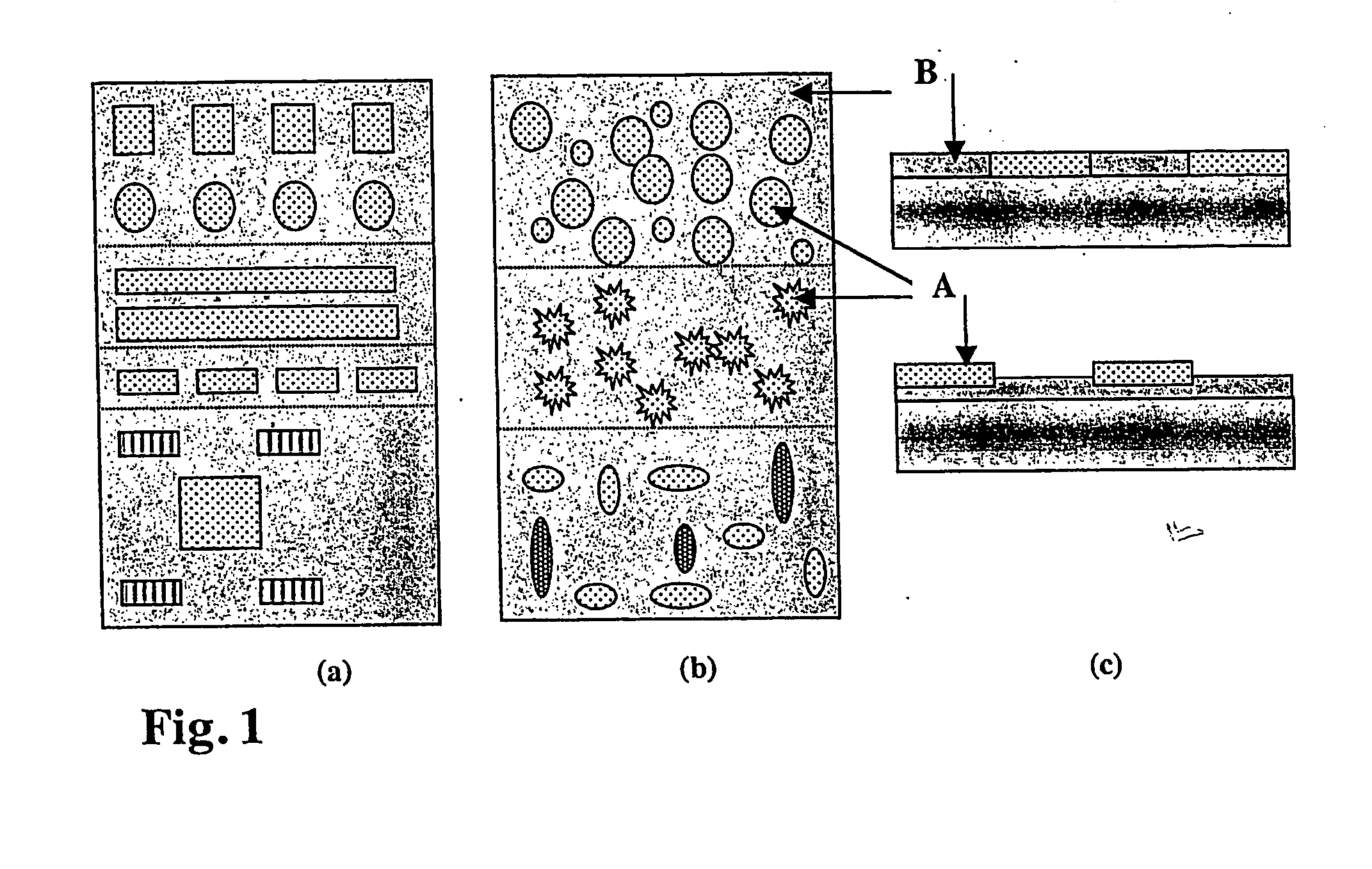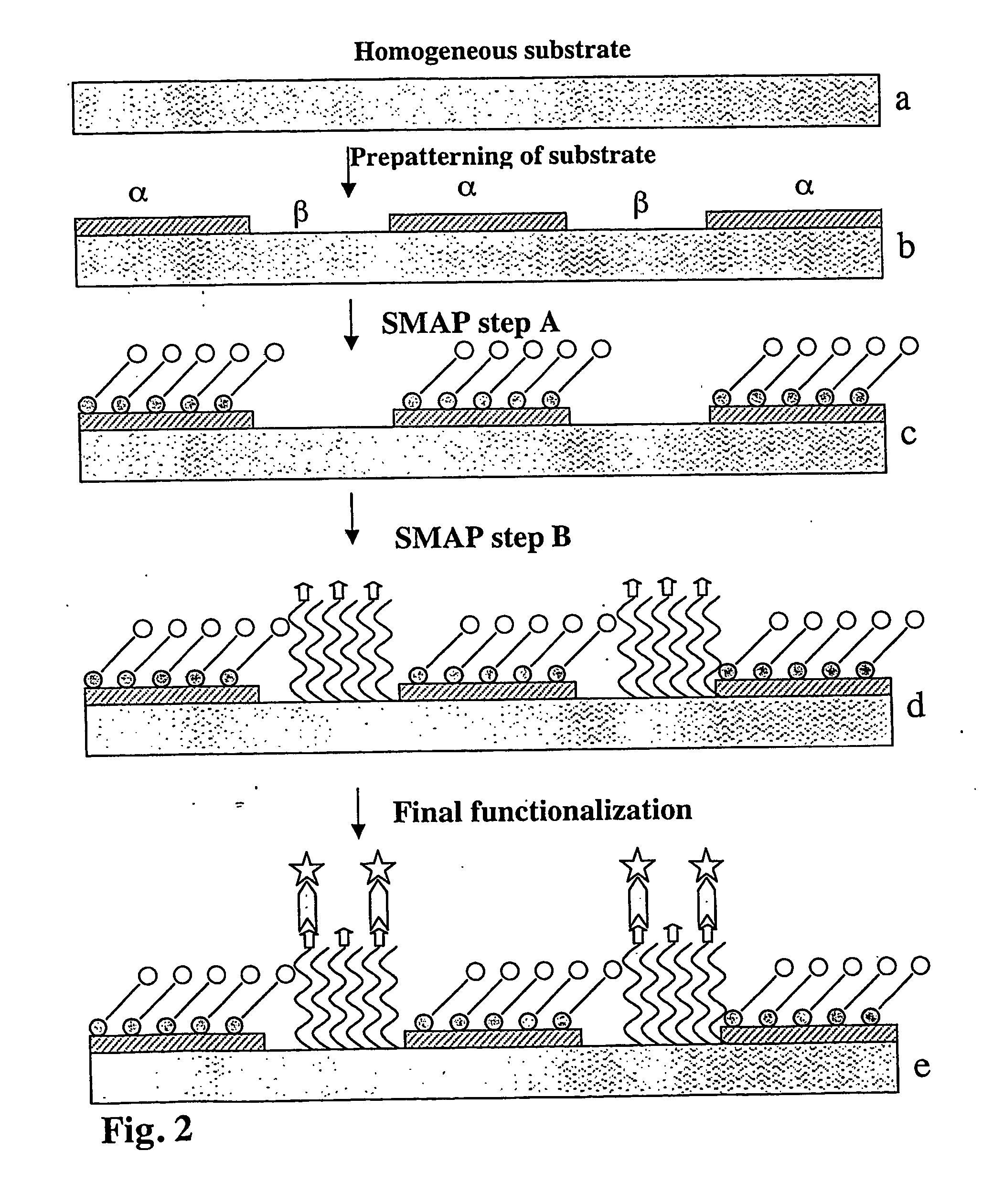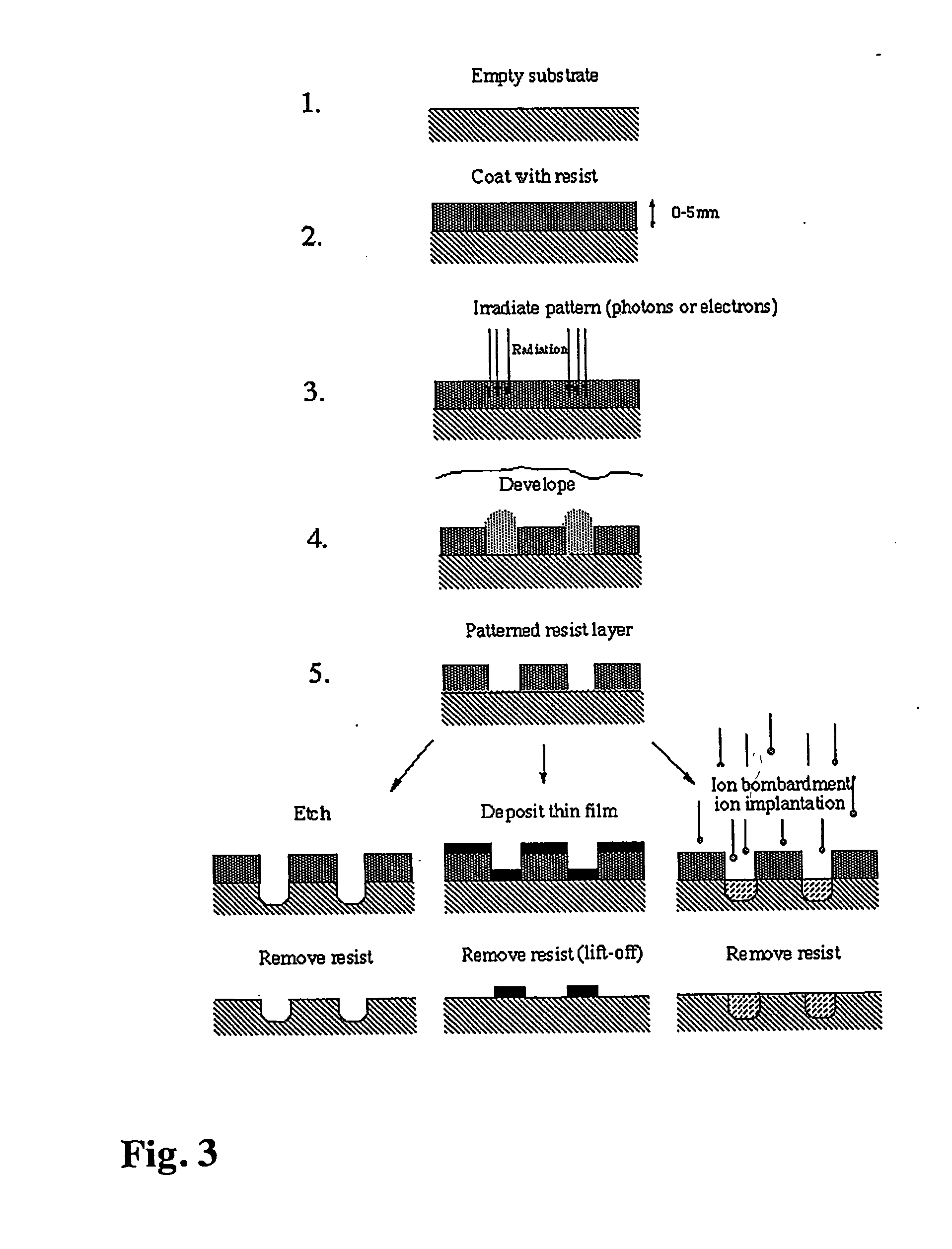Device with chemical surface patterns
a surface pattern and chemical technology, applied in the field of devices with chemical surface patterns, can solve the problems of difficult to achieve the effects of preventing healing reactions, prolonging inflammation, and improving the situation
- Summary
- Abstract
- Description
- Claims
- Application Information
AI Technical Summary
Benefits of technology
Problems solved by technology
Method used
Image
Examples
example 1
SMAP Based on Alkane Phosphate / / Poly(L-lysine)-g-poly(ethylene oxide) System (“Selective Chemical Reactivity Contrast”)
Out of aqueous solutions, dodecyl phosphate (DDP) self-assembles on metal oxides but not on silicon oxide. Subsequent application of PLL-g-PEG renders silicon oxide protein resistant, hence creating a pattern of protein-adhesive and resistant areas. Protein adsorption to the DDP-modified metal oxide surface is in this case non-specific and due to hydrophobic interactions between the hydrophobic alkane phosphate SAM and hydrophobic moieties of the protein.
As a specific example, the following consecutive steps were applied: a) The starting surface is produced using photolithography according to general scheme in FIG. 3. A silicon wafer was first coated with 100 nm TiO2 followed by 10 nm SiO2 using the magnetron sputtering technique. After application of a photoresist coating, irradiation through a corresponding mask, dry etching through the SiO2 layer using CF4 / C...
example 2
SMAP Based on Poly(L-lysine)-g-poly(ethylene glycol) / / Poly(L-lysine)-g-poly(ethylene oxide-biotin) System (“Electrostatic Contrast”)
The difference in the isoelectric point between titanium oxide and silicon oxide can be exploited to produce SMAP type II patterns based on electrostatic contrast. This type of SMAP is illustrated using the spontaneous assembly of poly(L-lysine)-g-poly(ethylene glycol) at charged surfaces, which is governed by electrostatic interactions. This technique requires a starting surface with a pattern formed by two materials whose isoelectric points (IEP) are sufficiently different (IEP of SiO2: ca. 2.5; IEP of TiO2: ca. 6). FIG. 9 shows the dependence of the adsorbed mass of PLL-g-PEG(-biotin) (MW of PLL: 20,000 Da, g=3.5, MW of PEG: 2,000 Da) to SiO2 and TiO2 surfaces respectively, as a function of the pH of the PLL-g-PEG aqueous solution to which the surfaces were exposed for a time of 15 min. It is obvious from FIG. 9 that at pH=1.2, PLL-g-PEG (or functi...
example 3
relies on another type of contrast, namely the exploitation of the hydrophobic / hydrophilic contrast already described in Example 1. In a further step, the hydrophobic areas are made protein- and cell-resistant (“non-interactive”) via the interaction with a triblock molecule that contains both a hydrophobic block (to interact with the hydrophobic area of the pattern) and hydrophilic PEG blocks to render the adlayer protein-resistant. The other area of the pattern, the PLL-g-PEG / PEG-X, is cell-interactive due to X=specific peptides interacting with cell membrane receptors.
Protocol: (a) MeO-DDP patches can be modified with PEG-based copolymers possessing a hydrophobic backbone (PPO-PEG). This renders metal oxide-DDP areas protein resistant. PLL-g-PEG / PEG-X (where X stands for a specific receptor functionality, such as biotin or RGD peptide) is used in the subsequent step to render silicon oxide able to bind desired macromolecules, specifically and with high affinity. (b) The pattern...
PUM
| Property | Measurement | Unit |
|---|---|---|
| Thickness | aaaaa | aaaaa |
| Thickness | aaaaa | aaaaa |
| Thickness | aaaaa | aaaaa |
Abstract
Description
Claims
Application Information
 Login to View More
Login to View More - R&D
- Intellectual Property
- Life Sciences
- Materials
- Tech Scout
- Unparalleled Data Quality
- Higher Quality Content
- 60% Fewer Hallucinations
Browse by: Latest US Patents, China's latest patents, Technical Efficacy Thesaurus, Application Domain, Technology Topic, Popular Technical Reports.
© 2025 PatSnap. All rights reserved.Legal|Privacy policy|Modern Slavery Act Transparency Statement|Sitemap|About US| Contact US: help@patsnap.com



